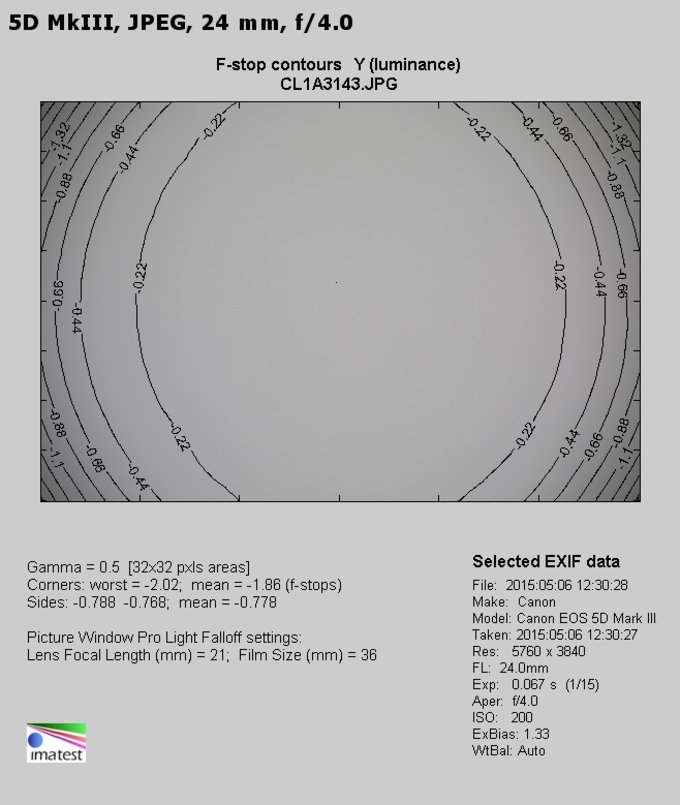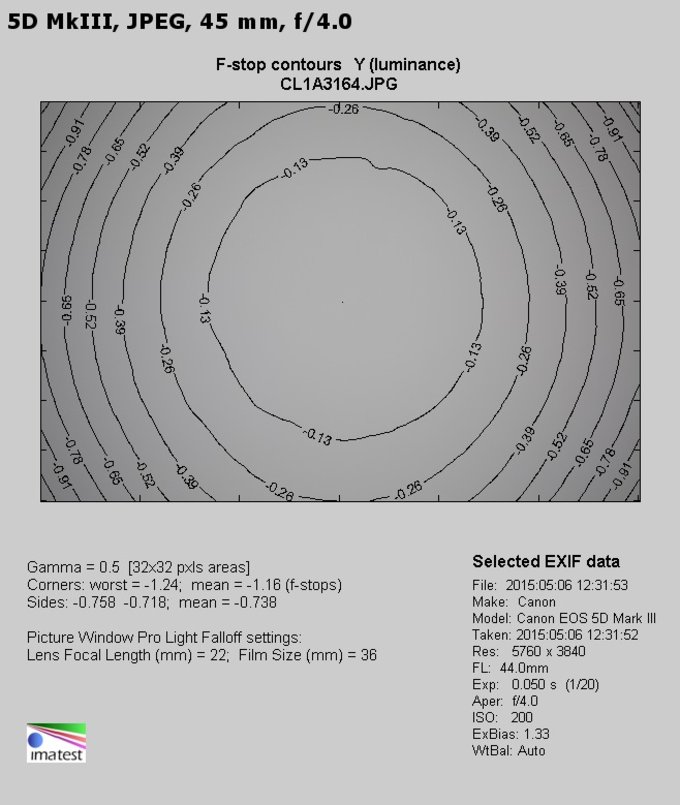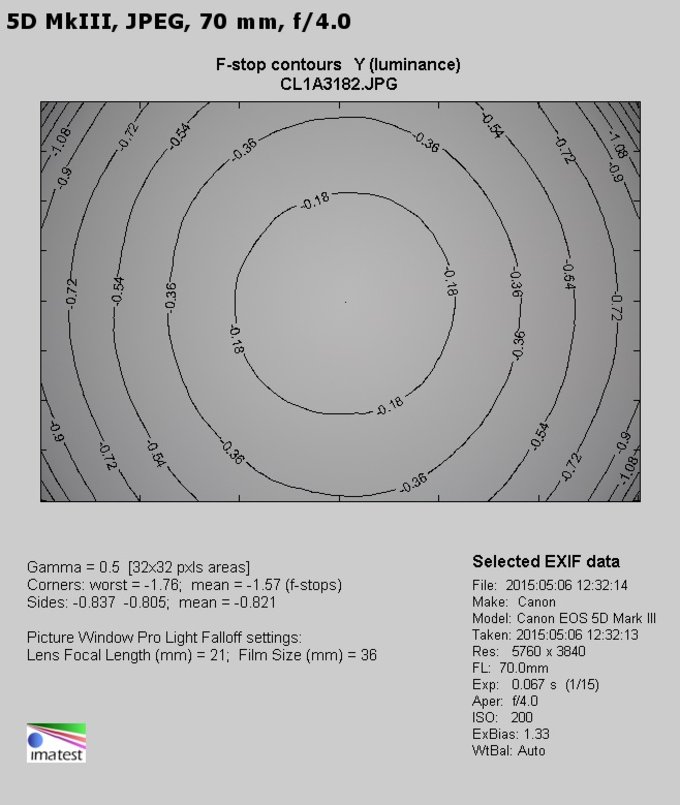Canon EF 24-70 mm f/4L IS USM
8. Vignetting
| Canon 50D, 24 mm, f/4.0 | Canon 50D, 24 mm, f/5.6 |

|

|
| Canon 50D, 45 mm, f/4.0 | Canon 50D, 45 mm, f/5.6 |

|

|
| Canon 50D, 70 mm, f/4.0 | Canon 50D, 70 mm, f/5.6 |

|

|
There are no reasons to worry here and our measurements confirm it too. At a difficult combination of wide angle and the maximum relative aperture the vignetting is almost imperceptible, reaching only 11% (−0.33 EV) and it disappears completely on stopping down to f/5.6, where it is just 9% (−0.27 EV).
A bit bigger chances to notice that aberration you get at the 45 mm focal length where, at the maximum relative aperture, you deal with a brightness loss in the frame corners of 16% (−0.51 EV). That problem disappears already by f/5.6, where we recorded a value of just 8% (−0.24 EV).
Please Support UsIf you enjoy our reviews and articles, and you want us to continue our work please, support our website by donating through PayPal. The funds are going to be used for paying our editorial team, renting servers, and equipping our testing studio; only that way we will be able to continue providing you interesting content for free. |
- - - - - - - - - - - - - - - - - - - - - - - - - - - - - - - - - - - - - - - - - - - - - - - -
Further vignetting increase can be noticed at the maximum focal length where, by f/4.0, that aberration reaches 20% (−0.65 EV). By applying the f/5.6 aperture you can make the problem disappear completely as then it gets to just 6% (−0.20 EV).
Now let’s progress to the performance on full frame. The appropriate thumbnails can be found below.
| Canon 5D MkIII, 24 mm, f/4.0 | Canon 5D MkIII, 24 mm, f/5.6 |

|

|
| Canon 5D MkIII, 45 mm, f/4.0 | Canon 5D MkIII, 45 mm, f/5.6 |

|

|
| Canon 5D MkIII, 70 mm, f/4.0 | Canon 5D MkIII, 70 mm, f/5.6 |

|

|
The situation is no longer so rosy and for understandable reasons. At the 24 mm focal length and by f/4.0 aperture you have to deal with a high vignetting level, amounting to 47% (−1.86 EV). It is especially painful as the vignetting doesn’t react to stopping down as fast as it should. By f/5.6 the aberration is 34% (−1.20 EV) and by f/8.0 it reaches a still bothersome level of 29% (−1.01 EV). Even after employing f/11 and f/16 apertures you don’t see this problem disappear completely as you have to take into account a vignetting level amounting to, respectively, 25% (−0.82 EV) and 20% (−0.64 EV).
There are definitely less problems in the middle of the focal range where, with the lens wide open, the light fall-off in the frame corners is 33% (−1.16 EV); it decreases to a not bothersome level of 16% (−0.51 EV) on stopping down the aperture to f/5.6. By f/8.0 the vignetting reaches 12% (−0.39 EV) and further stopping down doesn’t cause any measurable changes of the level of that aberration.
After passing to the maximum focal length the vignetting level increases again and, at the maximum relative aperture, it reaches 42% (−1.57 EV). By f/5.6 that aberration decreases to 23% (−0.75 EV), and by f/8.0 it becomes practically imperceptible, amounting to 11% (−0.35 EV).
 |
 |
 |






